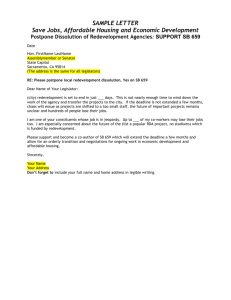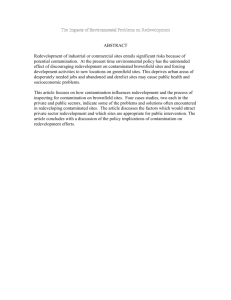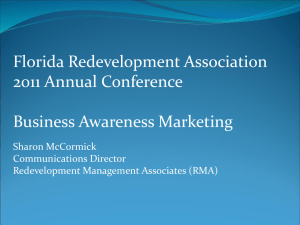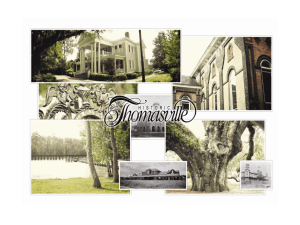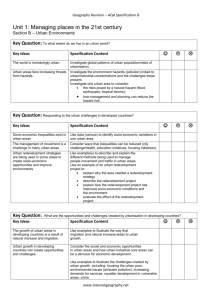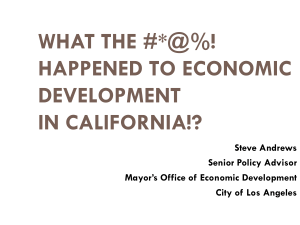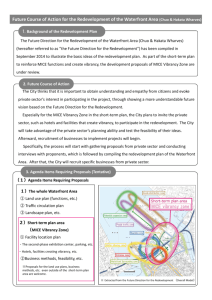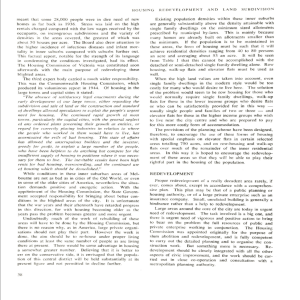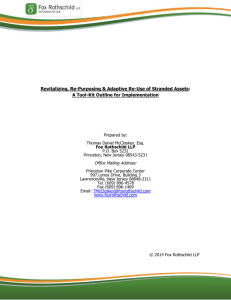Economic_Development_Plan_definitions
advertisement
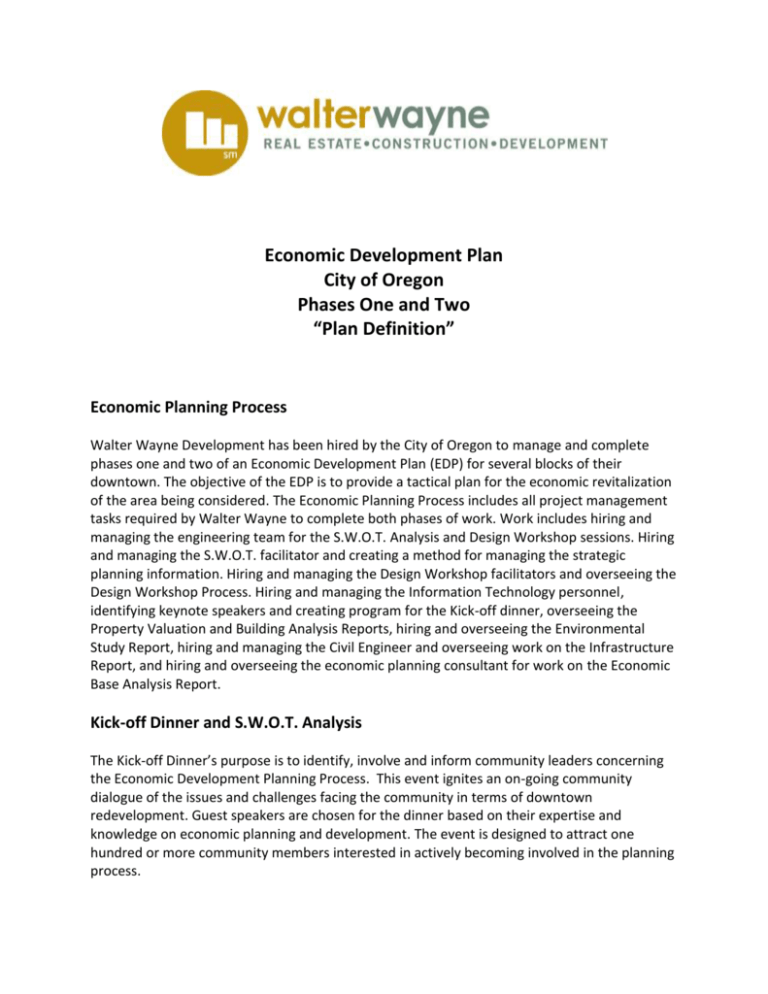
Economic Development Plan City of Oregon Phases One and Two “Plan Definition” Economic Planning Process Walter Wayne Development has been hired by the City of Oregon to manage and complete phases one and two of an Economic Development Plan (EDP) for several blocks of their downtown. The objective of the EDP is to provide a tactical plan for the economic revitalization of the area being considered. The Economic Planning Process includes all project management tasks required by Walter Wayne to complete both phases of work. Work includes hiring and managing the engineering team for the S.W.O.T. Analysis and Design Workshop sessions. Hiring and managing the S.W.O.T. facilitator and creating a method for managing the strategic planning information. Hiring and managing the Design Workshop facilitators and overseeing the Design Workshop Process. Hiring and managing the Information Technology personnel, identifying keynote speakers and creating program for the Kick-off dinner, overseeing the Property Valuation and Building Analysis Reports, hiring and overseeing the Environmental Study Report, hiring and managing the Civil Engineer and overseeing work on the Infrastructure Report, and hiring and overseeing the economic planning consultant for work on the Economic Base Analysis Report. Kick-off Dinner and S.W.O.T. Analysis The Kick-off Dinner’s purpose is to identify, involve and inform community leaders concerning the Economic Development Planning Process. This event ignites an on-going community dialogue of the issues and challenges facing the community in terms of downtown redevelopment. Guest speakers are chosen for the dinner based on their expertise and knowledge on economic planning and development. The event is designed to attract one hundred or more community members interested in actively becoming involved in the planning process. The S.W.O.T. (Strengths, Weaknesses, Opportunities and Threats) Analysis is a strategic planning tool used to better understand the socio-economic culture and priorities of the community. The S.W.O.T. session allows community leaders the opportunity to give input on what matters most to them in terms of redevelopment. These community priorities are documented at the planning session and incorporated into the Design Workshop. The event is designed to involve approximately one hundred community participants. Building Analysis and Property Valuation Reports The Building Analysis Report provides a cursory overview for the structural integrity of the primary buildings occupying the two block area. There is a concern that older buildings at times can be too costly to maintain and rehabilitate. This report attempts to examine what the rehabilitation costs would be to preserve many of the primary historic buildings in the two block area being considered for redevelopment. The Property Valuation Report provides the City with an understanding of the properties potentially considered for rehabilitation or removal for the redevelopment. The report provides property information such as, property boundaries, setbacks, zoning, valuation and other pertinent data strategic to the redevelopment. Environmental Survey The Environmental Survey is an attempt to understand through the Freedom of Information Act Records, properties with past or present environmental incidents that may impact the redevelopment plan. Information regarding the properties within the two block area is gathered from the IEPA and other government sources, reviewed and categorized as a property with or without environmental concerns. Environmental impacts can be costly to remediate. A thorough understanding of the issues surrounding impacted properties is critical to the success of the Economic Development Plan. Unfortunately, the information reviewed can sometimes be limited to what is publicly available by the State’s records. Design Workshop (Charrette) The Design Workshop is an intense two day “design” event for community leaders to create a working site plan for the redevelopment. Leaders are instructed to incorporate information gained from the planning process including engineering reports and data collected from the community, including results from the S.W.O.T. Analysis. Leaders are divided into design groups of six to eight participants per table. Each group works independently working to create a plan that represents priorities established over the entire economic planning process. The professional design facilitators are given the task to create two working plans from the five completed after the first day of the workshop and present to the community leaders for discussion on day two. Final concepts are completed at the end of the second day. Economic Base Analysis The Economic Base Analysis is a quantitative report that is defined in two parts. The first part provides historical financial information concerning the revenue generated from various taxing authorities. The report identifies trends with respect to property values, retail sales, property/sales taxes, revenues and other financial factors impacting the financial stability of the community. The second part addresses how the proposed future redevelopment could financially (tax revenues) impact the City and business community overall. Secondly, the report provides a brief summary of the public financial tools available to the community for support of the project. Phase three will provide a detailed financial plan for the redevelopment of the proposed area. Civil Infrastructure Study This work examines the current public infrastructure in place and recommends improvements that would need to be completed if a redevelopment were to take shape. The study includes reviewing sanitary, storm-water, utility, gas service, access, easements, setbacks, wells, well houses and other civil systems that could impact a redevelopment. Municipal Ordinances Review A review of the City’s ordinances for building requirements and specifications attempts to ensure the City has addressed the future design criteria for a redevelopment. Many times communities wish to create a historical business district for their downtown. Ordinances and design specifications need to be created to preserve the historical integrity of the community. Communities may desire to create a business district that allows for incentives to the business owners for rehabilitating their businesses. Phase three of the EDP addresses these financial concerns.
